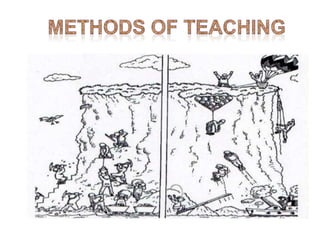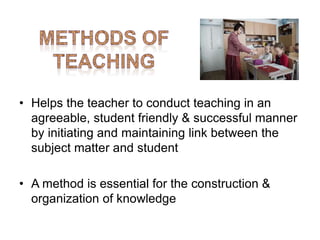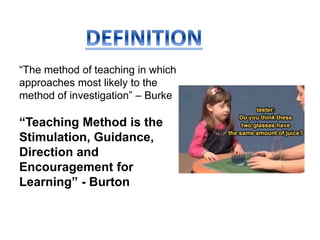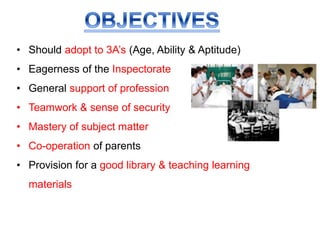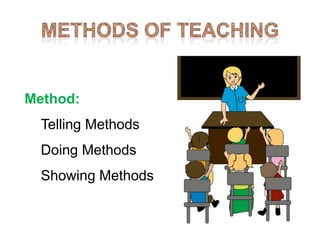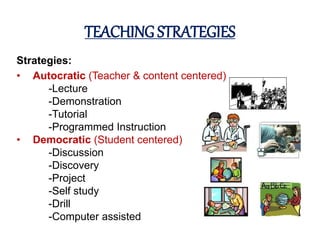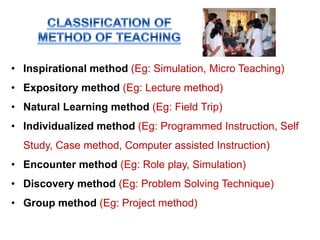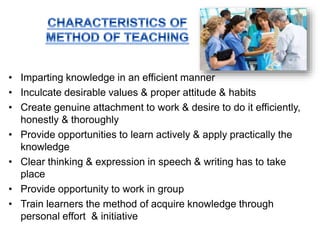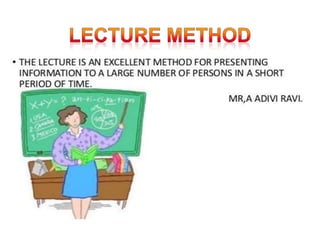The document discusses various teaching methods including lecture, demonstration, and their purposes, techniques, advantages, and limitations. It provides definitions and purposes of lecture and demonstration methods. For lecture, it outlines techniques for preparation, delivery and conclusion. Demonstration method is described as a way to visually explain concepts and procedures to train observation skills. The document also lists factors to consider and best practices for effective demonstrations.


